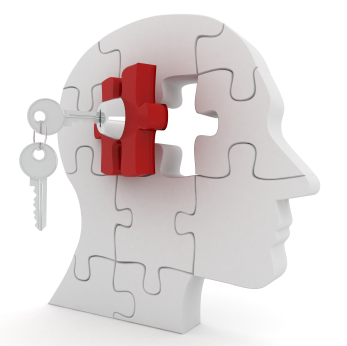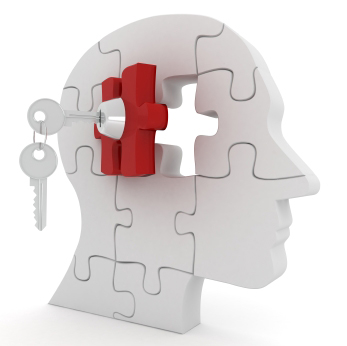Influential Selling – Can We Really Read Minds?
 Most sales people have the misconception that selling is all about persuading and convincing the customers to buy. As a result, they ended up learning techniques or tactics in order to get the customer to buy, and the customer resent that. In contrast, the Top 1% of high performing producer is not that concerned about getting customer to buy.
Most sales people have the misconception that selling is all about persuading and convincing the customers to buy. As a result, they ended up learning techniques or tactics in order to get the customer to buy, and the customer resent that. In contrast, the Top 1% of high performing producer is not that concerned about getting customer to buy.
They are more interested in how the human mind thinks and make decisions. As I always like to say,” it is not what the customer want, but how they make decision.” Is there a way to decode how the customers make their decision? Yes, there are.
There are also training which teaches salespeople to “build rapport.” While it is essential, it is not that crucial. We are trying too hard to get the customer to like us. Likability does not work in that aspect and we might have got it all wrong. Psychologist found that building rapport helps to facilitate the discussion, but it does not help to skyrocket your likability, best of all, it does not help you to close the deal. We need to do more than that and it is easier done than said. Yes. Easier done than said.
Over my years in learning about human behavior, I created the MBA Influence© methodology in human behavior and I am going to share with you the 3 cornerstones in influential selling, also known as the 3 cornerstones of influence.
Motivator
A good analogy would be like watching a movie like Inception, the people in the movie have the ability to enter the mind of a person and predict what a person will do next. If we can decode the mind of the customer, it increases our chance of finding out how customer makes a decision rather than guessing too hard what the customer want. In fact, customers do not know what they want most of the time.
One decision pattern that people use to help them make a decision without consciously knowing exactly what is going in their mind is the past, present and future. “Past customer” are those that based their decision on what had worked for them in the past should work for them in the future. “Present customer” based their decision on whether your solution can solve their problem NOW! “Future customer” is always looking into futuristic, exciting and future-ready solutions.
If I am selling my solution for the “past customer”, I will have to integrate my solution into what have worked for them in the past, and shared a bit more about how the past solutions they had, have evolved over the years and how this solution today complement the past. It does not matter how much you know about your product or solution if you do not know how your customer makes their decision unconsciously.
Behavior
Do I know what behavior or action I want my customer to make? It is more than just signing on the dotted line. It is about your customer saying, “Yes” to you and knowing how they go about making that “Yeses” to you. The way customer behaves can change with our environment.
For example, purchasing a car in Singapore is a big-ticket item purchase. Customers invest months considering before they make up their mind, some never make up their mind! And if you remember, the day when the new policies about car purchase were introduced, people thronged the car showroom till mid-night and eventually decided to take action and buy, when they had spent months debating over the purchase. In this scenario, the principle of Scarcity wins the day. People want more of what they have less of.
The environment (in this case, the new policy) influenced the behavior. Be very sure what behavior you want from the customer. Is it to take advantage of the limited time offer? Establishing a sustainable business relationship? Or are you more interested in empowering your customer to open up their problems to you through power questioning. There is a time for everything. There is an environment for each behavior.
Habit.
40% of the time when we make a decision is habitual! When I research about this, I was taken aback about the truthfulness in reality. How many times have we made rational and logical decision? Not many times! Provided if the decision is a big-ticket item or a situation that is unfamiliar to us. Majority of the time, we make decision habitually especially in the workplace. Haven’t we heard it so often, “it have always been done this way.”
If we can predict customer habitual pattern when making decision, we can leverage on what makes them so and it does reduce unnecessary objection. One habitual pattern is timing. There will always be time when customer is not open to new solutions, for example, when it’s near the end of their accounting period, all purchase will usually freeze. Or when a new CEO comes onboard, the “purchasing mind” is closed since everything is uncertain. And when it comes to the yearly serious audit, their habit of fear turns on and chooses not to spend on anything that can throw people overboard!
There we have it – The MBA Influence Model©. When we can understand what motivates people, we can predict an answer. When we can identify what positive behavior we want customer to be, we can influence their environment positively. When we can decode customer’s habit about their decision, we can predict their pattern. End of the day, it is never about just your product or solution but how people makes their decision and say “yes” to you and not others.
Influence is The Levers That Moves The World.
Article by:
Joseph Wong is the Founding Director and Behavioral Transformation Coach of TrainingGearAsia Pte Ltd, with a purpose on “Building Influential Leadership Across Asia”. His expertise and program on INFLUENCE can be found at www.traininggearasia.com. Or email influence@traininggearasia.com for more information.






